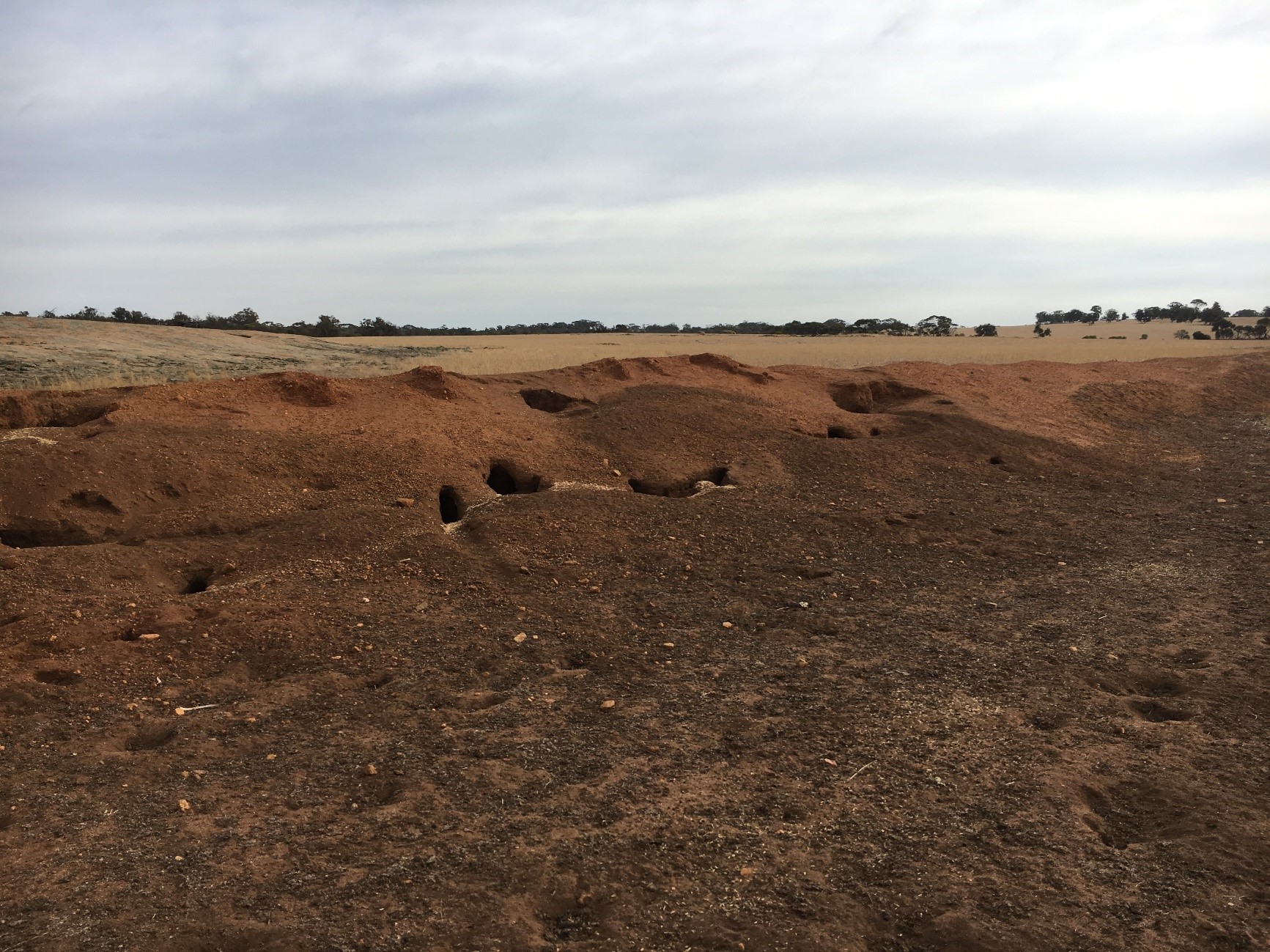The lead up to spring is a great time to get yourself prepared for feral animal control.
Mesopredators, such as foxes and cats, are incredibly proficient hunting machines that can wreak havoc on populations of native species throughout the Wheatbelt. Rabbit populations support artificially higher number of mesopredators such as foxes and cats – while the presence of foxes and cats does little to control rabbit populations.
Understanding the predator-prey relationship
For this reason it is helpful to consider predator-prey interactions when planning for effective feral animal management.
If we are effective and only target rabbits we risk a scenario known as prey switching. This is where cats and foxes in the absence of rabbits as a food source seek out and effectively switch, out of necessity, from their preferred prey to other species.
We know that populations of birds and small marsupials are at particular risk; as are malleefowl, numbats, chuditch and a range of other threatened species who are already under pressure.
The argument for strategic management
Tackling rabbit, cat and fox populations on your property has the flow on effect of helping the native flora and fauna.
It is important to manage foxes and cats concurrently (or in quick succession) to prevent the outcome of prey switching. Our native fauna have not evolved to the point where they are well equipped to deal with the threat that foxes and cats present.
Studies in New Zealand have demonstrated that feral cats can wait until their health is seriously deteriorating before making a switch from their food source of preference. This presents an ideal opportunity to coerce them into a cage trap with rabbit bait when there are less rabbits available to them in the environment.
So, what can you do?
There are steps that can be taken to reduce the feral animal burden on your own property and in the community:
- Destroy any rabbit warrens you find to reduce their ability to survive over the hot summer
- Identify all entrances for the placement of Phostoxin to fumigate warrens
- Complete your 1080 training so you’re ready to purchase and deploy bait
- Think about a method to start measuring what impacts your activities may have. Simple things like counting the numbers of rabbits you see on your way up your drive prior to starting your management
- Replicating this count over the same drive to help understand the impact of your management
- If you don’t tend to see rabbits on your driveway, chances are very high you have somewhere on your property where rabbits tend to congregate (eg. under your shed or amongst a pile of rocks).
This puts you in a better position to adapt your methods where required.
The last word in feral animal control
Finally, a few tips when considering your feral animal control plan:
- Be mindful of where you situate cage traps
- You’re better off spending time setting up a few cages traps for success than we are putting a large number out in paddocks with a piece of KFC in them and crossing your fingers
- Situate your cage trap along feral animal pathways
- Wrap your cage trap across the top and sides – we use hessian – this provides security for animals to enter the trap with a light at the end of the tunnel for perceived escape.
- Audits have shown that wrapped cages perform better for target species than unwrapped traps
- Wrapped cage traps also provide increased deterrence for non-target species – especially native animals
You can access a practical guide to trapping feral animals on our website. Remember that our team is available to provide support if you are having issues or would like advice in your preparations for Spring feral animal control.
The project is supported by funding from the Australian Government’s National Landcare Program.


